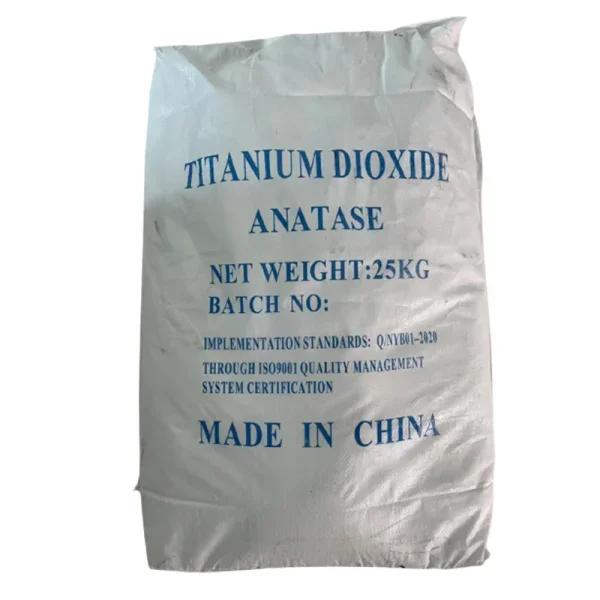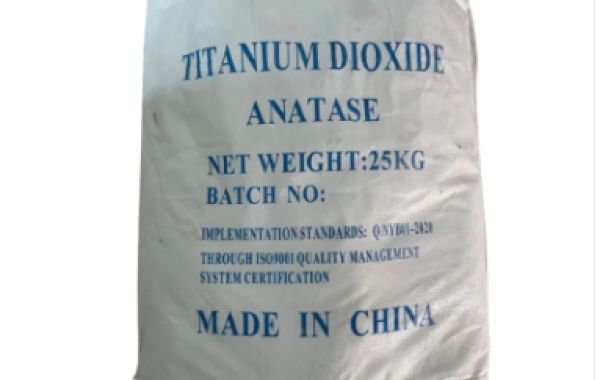Looking for a natural ingredient that can help reduce pollution and protect the environment? Look no further than anatase titanium dioxide! This versatile material has numerous environmental applications, from air purification to water treatment. In this blog post, we'll explore the many ways in which anatase titanium dioxide is being used to improve our planet's health. So sit back, relax, and discover how this tiny particle is making a big impact on sustainability!
What is anatase titanium dioxide?
Anatase titanium dioxide is a naturally-occurring mineral that has been used for centuries as a pigment in paints, plastics, and other materials. It is one of three types of titanium dioxide, with the others being rutile and brookite.What sets anatase apart from its counterparts is its unique crystal structure. It has a higher surface area than rutile or brookite, which allows it to interact more easily with other particles.Anatase titanium dioxide is also known for its photocatalytic properties. When exposed to light, it can break down organic compounds into harmless substances like carbon dioxide and water vapor. This makes it an excellent choice for applications like air purification and water treatment.One of the most fascinating things about anatase titanium dioxide is how versatile it is. It can be used in everything from solar cells to self-cleaning coatings on buildings. And because it's non-toxic and biologically inert, there are few environmental concerns associated with its use.Anatase titanium dioxide may be small in size but big in impact – both for industry and the environment alike!

What are the environmental applications of anatase titanium dioxide?
Anatase titanium dioxide is widely used in various environmental applications due to its unique properties. One of the primary uses of this compound is as a photocatalyst for air purification. It can effectively degrade pollutants such as volatile organic compounds, nitrogen oxides, and sulfur dioxide when exposed to UV light.Another application of anatase titanium dioxide is in wastewater treatment. By adding this compound to water, it can remove impurities and break down harmful chemicals present in industrial effluents. This process results in cleaner water that can be safely discharged into the environment.Anatase titanium dioxide also plays a role in solar energy production. As a semiconductor, it can harness solar energy and convert it into electrical power through the process of photovoltaic generation. This technology has potential for widespread use as an alternative source of renewable energy.In addition to these applications, anatase titanium dioxide has shown promise as a material for self-cleaning surfaces. When applied to building facades or other outdoor structures, it reacts with sunlight and breaks down dirt particles on its surface, leaving behind clean and shiny surfaces without the need for regular cleaning.Anatase titanium dioxide offers numerous benefits for environmental applications including air purification, water treatment, solar energy production and self-cleaning surfaces among others. Its potential uses continue to expand as researchers discover new ways to utilize its unique properties towards creating sustainable solutions for our planet's challenges.
How does anatase titanium dioxide affect the environment?
Anatase titanium dioxide has numerous environmental applications, but it is crucial to understand how it affects the environment. In terms of toxicity and ecological impact, anatase titanium dioxide nanoparticles can pose a threat when released into water systems. These particles have been shown to harm marine life such as fish and aquatic plants.Moreover, anatase titanium dioxide nanoparticles may also contribute to air pollution when they become airborne during manufacturing processes or product use. It can lead to respiratory problems in humans and animals alike.Furthermore, anatase titanium dioxide exposure can affect soil quality by reducing microbial activity that plays a critical role in nutrient cycling and decomposition of organic matter. This could potentially alter the ecosystem balance with far-reaching consequences for plant growth.Despite these negative impacts on the environment, there are measures in place that aim at controlling its release into ecosystems. The industry is actively researching methods such as encapsulation techniques which reduce nanoparticle dispersion into the environment.While anatase titanium dioxide has multiple applications beneficial to society; this doesn't mean that we shouldn't be vigilant about its potential impact on our planet's health. It's essential always to keep research ongoing about how we can safely use this compound without jeopardizing environmental sustainability.
Conclusion
Anatase titanium dioxide has numerous environmental applications that have proven beneficial to both the environment and human health. From air purification to water treatment and even self-cleaning surfaces, the use of anatase titanium dioxide has shown great potential in reducing pollution levels and enhancing sustainability efforts.However, it is important to note that further research is necessary to fully understand its long-term effects on the environment. Additionally, proper disposal methods must be implemented to prevent any adverse effects during manufacturing or usage.As awareness for sustainable living continues to grow, anatase titanium dioxide presents itself as a promising solution towards achieving a cleaner and healthier planet for generations to come.Please contact us,if you need.554721875@qq.com







